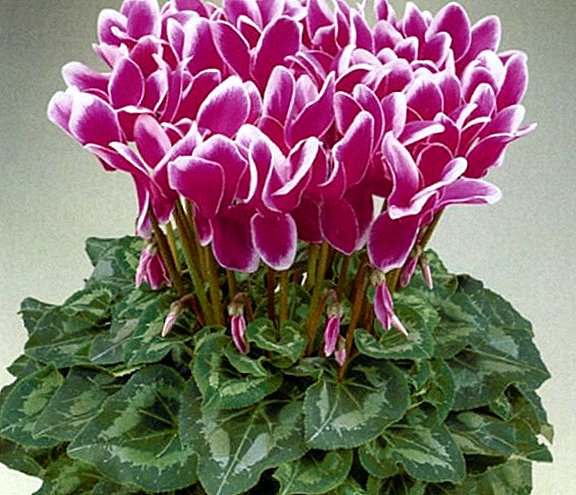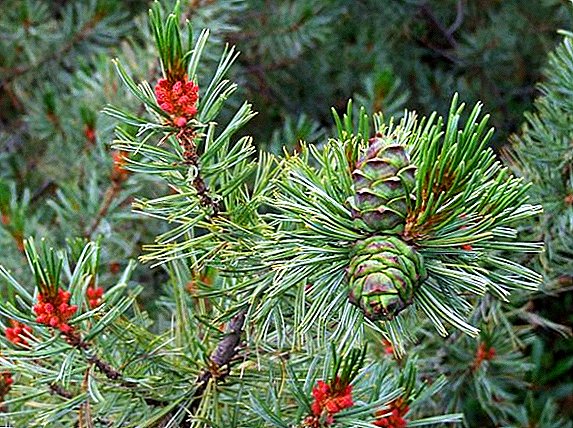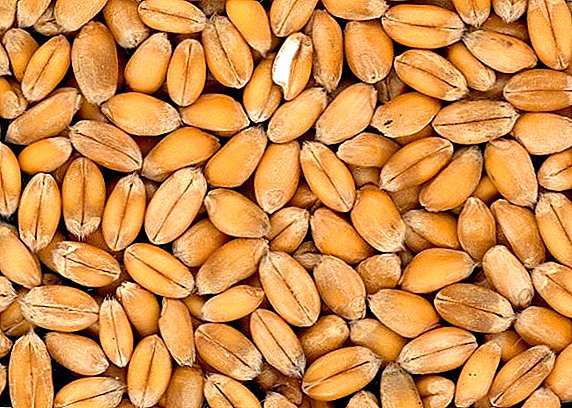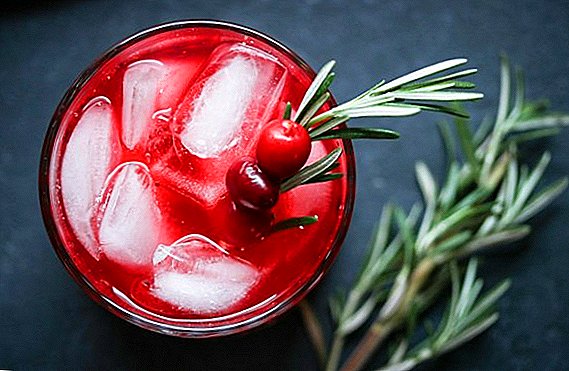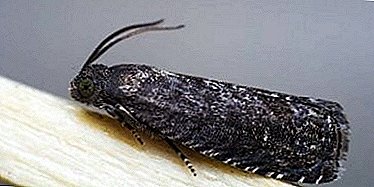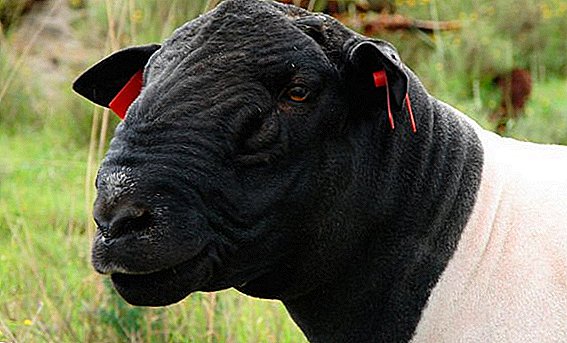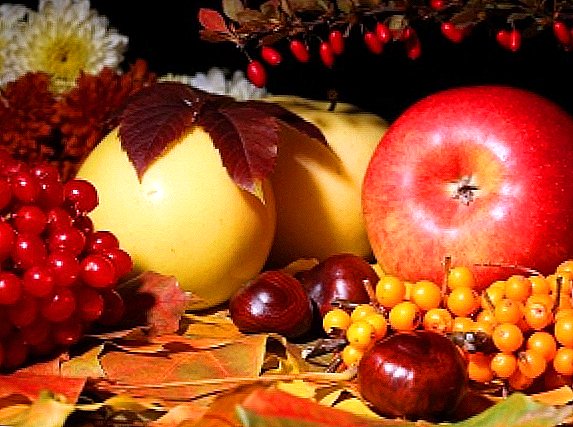 The Rwenzori Mountains are one of the most picturesque places in Africa, largely due to the diversity of the most beautiful plants growing there, in particular, the Ugandan clerodendrum. Its bright flowers, similar to butterfly wings, are of considerable interest to flower growers. The article discusses the peculiarities of growing this plant at home.
The Rwenzori Mountains are one of the most picturesque places in Africa, largely due to the diversity of the most beautiful plants growing there, in particular, the Ugandan clerodendrum. Its bright flowers, similar to butterfly wings, are of considerable interest to flower growers. The article discusses the peculiarities of growing this plant at home.
Plant description
This is an evergreen semi-shrub-poluliana, which some scientists refer to the Verbenov family, whereas the official point of view is that the plant belongs to the family of Cluster (Gubotsvetnykh).

Clerodendrum can be easily distinguished from other representatives of the flora due to such morphological characteristics:
- five-petal blue flowers (2-2.5 cm), shaped like butterflies;
- a more brightly colored (blue or lilac) lower petal;
- graceful, long and curved stamens, like a mustache;
- strong-growing, thin stalks capable of reaching 2-2.5 m in height;
- initially flexible and soft, but the wood-growing shoots over time;
- dark green, ellipsoidal, slightly wrinkled leaves about 10 cm long;
- panicle inflorescences.
Did you know? The plant has an alternative name - myricoid roteka (Rotheca myricoides). So it began to be called relatively recently, at the end of the 90s of the last century, when scientists began to single out a separate botanical genus Rotek, to which the Ugandan exot under consideration belongs.
What conditions need to create at home
Clerodendrum is a tropical plant, which necessitates the creation of conditions for it as close as possible to the climate of humid equatorial forests. Consider in detail the requirements for the content of the Ugandan clerodendrum.
Lighting
This flower prefers good lighting, so the window sill of the south (in extreme cases, east or west) window will be the most suitable place for its location. In winter, you must use the backlight with ultraviolet light or fitolampa. In summer, it is better to take the flower to the garden or to the open terrace.
Temperature conditions
In the warm season, the klerodendrum comfortably feels at a moderate temperature of + 18 ... + 25 ° С. The heat adversely affects the condition of the leaves and the setting of the buds. In winter, the flower needs a special mode in order to gain strength. The range of optimal winter temperatures ranges from + 12 ... + 16 ° С. If there is no possibility to reduce the temperature to these limits, it is recommended to put the plant pot on the windowsill against the glass.

Air humidity
This plant requires high humidity in the room, so you should:
- keep the flower away from central heating radiators and radiators (in winter);
- daily spray it with soft water;
- take care of the presence of a humidifier;
- place the pot in the pan with wet clay or peat.
How to care at home
Ugandan Clerodendrum is a fairly unpretentious plant that requires standard care procedures: watering, feeding, pruning, transplanting.
Watering
In irrigation of the klerodendrum, a balance is very important: although this vigorous plant requires abundant and frequent (at least 2 times a week) irrigation during the growing season, but excessive waterlogging will lead to rotting of the roots. In addition, they begin to reduce watering in the fall, leaving sparse irrigation as needed (without bringing the earthen clod to dryness). Water for irrigation should be soft (separated), ideally thawed and rather warm (not colder than room temperature).
Important! It is best to use a watering can with small holes at the end so as not to erode the soil. For leaf spraying spray applied.
Fertilization
Top dressing with mineral fertilizers is carried out in the spring-summer period 1 time in 2 weeks, combining with irrigation. Complex preparations with a high content of phosphorus are used for flowering plants ("Zelenite", "Florumut", "Agricola"). It is necessary to strictly follow the instructions, even a slight decrease in concentration is allowed. In the cold season feeding stops.
Pruning
Like any liana or powerful shrub, the klerodendrum needs a shrub to form. This procedure is carried out not only to improve the appearance of the plant, but also to promote flowering.
A flower can be formed in three main ways:
- Like a liana. The amber form (falling shoots) can be maintained by the klerodendrum independently. It is enough only at the beginning of spring (or in the fall, before the rest period) to shorten the ends of the twigs (about a third, depending on the desired size of the plant), and then periodically pinch the green shoots.
- Like a stem tree. To do this, remove all the branches and leave one strong escape, which is tied to a support. When they reach a height of 60-70 cm, the crown of the head is regularly pinned. Thus, the tree crown is created. Growing side shoots and root processes are also systematically removed.
- Like a bush. In this case, leave 3 escapes, and the rest are removed. The crown of the remaining shoots is pinched as new twigs appear. Root shoots are not removed, so that the bush is thicker. With strong thickening, you can cut several shoots from the middle of the bush.
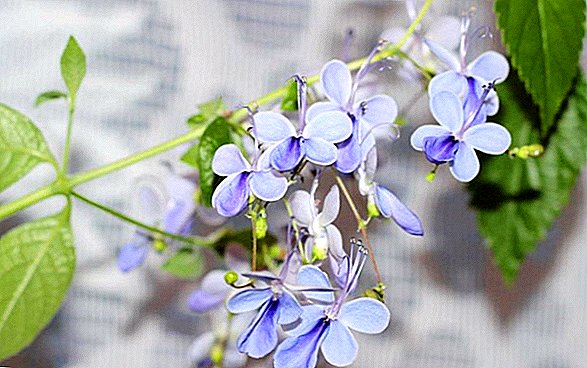
Transfer
The frequency of transplantation depends mainly on the age of the plant. Young klerodendrum transplanted annually, mature - once in 2-3 years. The flower should be transplanted at the beginning of the active growing season, i.e. in spring. Usually, the transplant procedure is preceded by pruning. New capacity should not be much larger than the previous one (no more than 2-3 cm in height and in diameter). This applies to young plants. An adult liana is transplanted into pots identical to the previous ones (to contain growth).
For klerodendrum should carefully choose the soil, paying attention to the following characteristics:
- nutrition;
- mild acidity (pH 5-6);
- friability, breathability.
A ready-made store substrate (the same one that is purchased for the rosary) or self-prepared soil mixture is well suited:
- leaf humus - 2 parts;
- peat - 1 part;
- river sand - 1 part.
Video: Clerodendrum Transplant
A transplant happens this way:
- The soil is disinfected (by treating with antifungal or calcined in the oven).
- At the bottom of the new pot put a drainage layer (expanded clay, gravel) up to 4-5 cm thick.
- Pour the soil.
- The flower is taken out of the pot. The ground is shaken off the roots, and the roots themselves are washed under running water and slightly cut.
- The plant is placed in a new container and sprinkled with earth, which is tamped and well moistened.
Important! Touching the leaves of the Ugandan clerodendrum, they can trigger the release of essential oils and the appearance of a specific, rather unpleasant aroma.
Breeding
There are two ways to get new plants from your clerodendrum, having pleased colleagues in floriculture, who have not yet had time to get a "blue butterfly":
- Cuttings. During pruning, the branches are divided into parts with 3-4 internodes, each cutting has several upper leaves, each of which can be cut in half (so that the cuttings do not dry). The bottom of the cuttings is treated with a growth promoter and rooted in moist soil. Potted with cuttings covered with foil or placed in a large plastic container, closing the lid on top. Containers need regular airing. In the process of rooting cuttings plentifully watered. Young plants can also be rooted in water (in a jar filled with water for a third, which changes every 2-3 days).
- Seed propagation. In mid-March, the seeds are put in peat cups (or simply in pots with a mixture of peat and sand), irrigated with plenty of water and covered with foil. This greenhouse is kept in a warm and bright place, airing it daily (after the emergence of shoots, the ventilation time is increased). After a few months, young klerodendrum transplanted to a permanent place.
Video: Reproduction of clerodendrum cuttings
Difficulties in growing
The most common difficulties with growing klerodendrum arise from gardeners due to improper care of the plant. Damage by diseases and pests of flowering plants are also frequent.
Why does not bloom
Blue flowers delight the eye of the owners of clerodendrum, starting in mid-spring and throughout the summer. Sometimes growers complain about the lack of flowering.
The reasons for this may be several:
- improper wintering mode (too warm indoor air and frequent watering);
- incorrect and untimely pruning (keep in mind that flower buds form on one-year branches);
- deficiency of phosphorus and potassium, as well as an excess of nitrogen in the soil;
- no transplant for a long time.
Diseases and pests
Clerodendrum often suffers from chlorosis. With this disease, the leaves turn yellow, shallow, curl and fall off, and the flowers dry out. Chlorosis is usually caused by a lack of iron and a violation of the formation of chlorophyll.
Did you know? An interesting folk method of dealing with chlorosis - instillation of rusty nails in a pot with a plant.
To prevent the disease should:
- monitor the acidity and permeability of the soil;
- from time to time, water the flower with acidified water (1 tsp. of citric acid or cider vinegar in 5 liters of water).
If the plant is already affected by chlorosis, it is necessary to spray it with fertilizer with a chelated form of iron (Ferrovit, Ferrilen).
In addition to chlorosis, there are the following problems with klerodendrum due to improper care:
- small yellow spots on the foliage (due to improper location of the flowerpot - insufficient lighting or, conversely, too bright sunlight);
- yellowing leaves (due to lack of moisture);
- dry spots on the leaves (caused by drafts and too low air temperature);
- shedding of buds and foliage (due to too dry air).
As for pests, most often, klerodendrum becomes the object of attention:
- Spider mite. A spider web appears on the plant, leaves fade. Initially, the tick can be washed away by hand with a soap solution, in advanced cases only an insecticide will help.
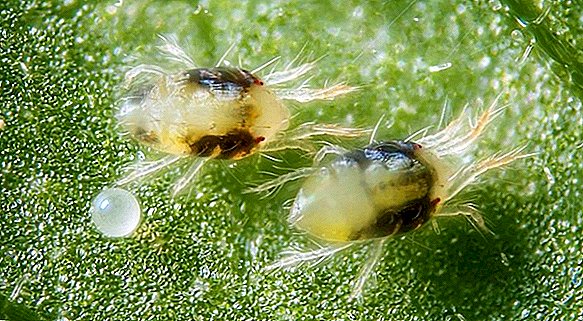
- Aphids. Its negative impact leads to stunted flower growth, foliage falling. In this case, it is necessary to remove the affected parts of the plant without delay and to treat the clerodendrum with an insecticide (for example, “Aktaroy”).

- White fly. This cousin aphid is easy to determine by the presence of white bloom on the foliage, similar to powdered sugar. In the fight against the whitefly, they act in the same way as in the case of aphids.

Klerodendrum Ugandan is undemanding in care and can be easily grown even by a novice grower. The latter will be enough to fulfill the recommendations set forth in the article, and soon he will be rewarded with a spectacle of bright and elegant flowers, butterflies.






